10 Ways to Get Exposure to Gold

10 Ways to Get Exposure to Gold
All that glitters...
The S&P 500 Index is near all time highs, recession concerns are mounting, and investors are getting scared. That's why some big name hedge fund managers are talking about gold and an equity analyst has even coined a new fun acronym for key stocks in the space (BAANG) to compete with the tech driven FAANG stocks. If you are getting interested in gold too, keep reading to hear about 10 ways that you can add it to your portfolio.
Why do that? Because gold is seen as a safe haven investment. The type of hard asset that investors will flock to when stock prices are falling sharply, a role it has played throughout Wall Street's history. In fact, it's a good idea to have some gold in your portfolio all the time, if only for diversification purposes. But right now, with risk seemingly rising by the day, it makes particular sense to dig a little further into your options in the gold space.
Previous
Next
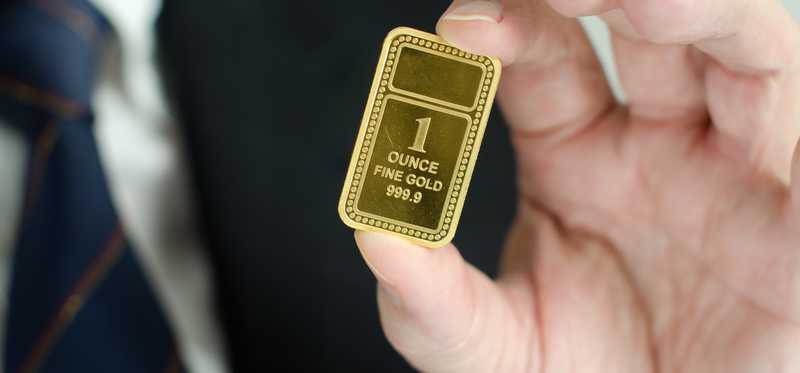
1. Gold bullion
The most obvious choice for buying gold is to acquire some physical gold. That's likely to come in the form of bullion, or gold coins. You can also buy gold ingots or bricks (it takes a lot of money to buy a gold brick). This, however, isn't the best way to add gold to your portfolio.
For starters, an ounce of gold is always an ounce of gold. In other words there's no growth potential, you only make money if the spot price of gold rises above what you paid. Second, there are usually notable markups for gold when you buy from a dealer -- he or she has to make a living too. And lastly, you need to do something with the gold you buy. That can mean shoving it in a drawer or renting a safe deposit box at a bank. But either way, you are on the hook for figuring out how to keep this valuable asset safe. All in, unless you expect the financial world to implode, having physical gold is probably more hassle than it's worth.
Previous
Next
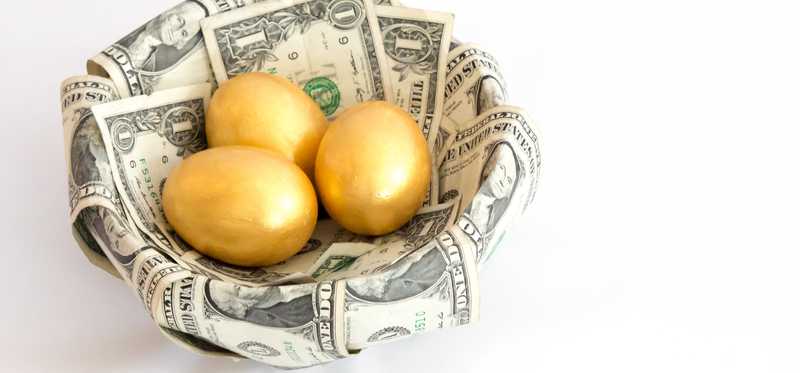
2. A gold-linked ETF
That's where a gold-linked exchange traded fund (ETF) like SPDR Gold Shares (NYSEMKT: GLD) comes in. Like most ETFs, this is a pooled investment in which multiple people put money toward buying a portfolio of assets. In this case, the only asset that is bought is physical gold. SPDR Gold Shares owns around 28 million ounces of gold. That's a lot of bling! But what's really important for investors is the difference between owning physical gold and owning SPDR Gold Shares, or a similar gold-linked product.
For example, you can trade an ETF all day long through your brokerage account without having to worry about markups or needing to bring your investment to a dealer and haggle over the price. You also go in knowing your costs. In this case every trade will require you to pay a stock commission and the SPDR Gold Shares's expense ratio is 0.40%. And, like owning physical gold, you benefit from the yellow metal's price increases. Although probably better than owning bullion, for most investors this is still not the best option.
Previous
Next
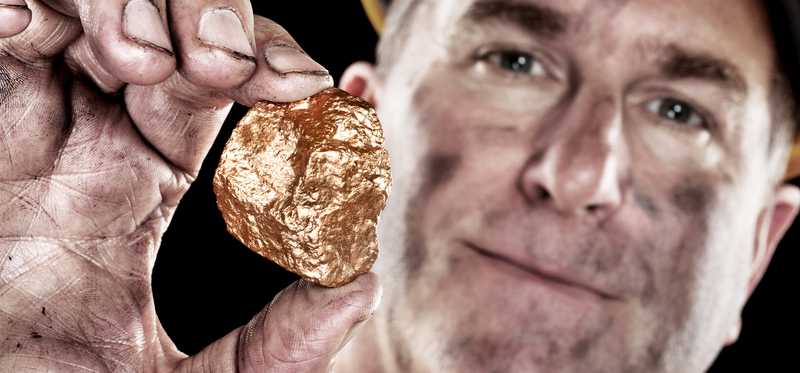
3. Barrick Gold
The next most common avenue for investing in gold is buying stock of a gold miner like industry giant Barrick Gold (NYSE: GOLD). This is a less direct path, but it provides investors with some growth opportunities. That's because a miner can invest in new mines and expand older ones. As one of the largest and oldest players in the gold mining space, Barrick is good place to start your gold stock research.
That said, there are some downsides to owning a miner. Specifically, gold miners are operating businesses. They have to adjust their costs to rising and falling gold prices to ensure that they are making money. That doesn't happen overnight, and steep gold price declines can leave a miner like Barrick bleeding red ink until it restructures its operations and cuts costs. In something of a preemptive move, Barrick recently formed a partnership with another industry giant in Nevada that it believes will help it to materially reduce its operating costs in the region. This is positive move, but shows that you have to keep an eye on what's going on at these businesses if you choose to get your gold exposure in this manner.
Then there's also the risk that something goes wrong at a mine (like a collapse) or an investment doesn't pan out as expected (like less gold than projected). That can lead investors to sell a miner's stock, even if gold prices are rising. If you plan to buy a gold miner, it might make sense to look at more than one name.
Previous
Next
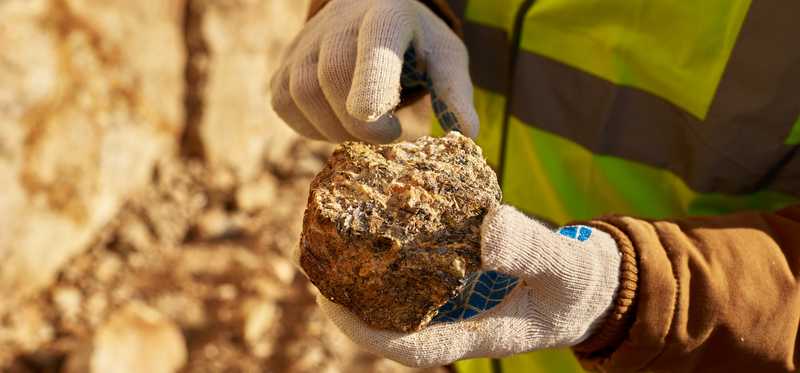
4. Newmont Goldcorp
The company that Barrick has partnered with in Nevada is Newmont Goldcorp (NYSE: NEM). So it should benefit from falling costs too. But what's interesting here is that Newmont recently merged with Goldcorp to create Newmont Goldcorp. The deal faced some stiff opposition, but it materially changes the playing field in gold. Historically, Barrick was the industry giant. But after buying Rangold, Barrick has basically chosen to keep selling assets in an attempt to focus on only top-tier gold mines. It has ceded the top industry position to Newmont Goldcorp. So if you want to own the biggest name, Newmont Goldcorp is the company to watch.
Newmont Goldcorp's industry position is pretty impressive, with more production than anyone else. And it has a huge slate of projects in the wings to keep growing production over time. That's good news, but investors should keep in mind that building a mine is a difficult, costly, and time consuming effort. And there's no way to tell if the effort was worth it until the mine starts producing. In other words, Newmont Goldcorp may be big, but that doesn't change the fact that there are material risks to monitor.
Previous
Next

5. A gold miner ETF
Which brings up the idea of avoiding trying to keep track of individual gold majors and, instead, putting your money into an ETF like VanEck Vectors Gold Miners ETF (NYSEMKT: GDX). This is a broad-based exchange traded fund that diversifies your risk by spreading its bets across 44 different gold miners. Barrick and Newmont Goldcorp are on the list and make up a hefty 21% or so of the overall portfolio, but there are a lot more names included. The expense ratio is 0.52%.
An investment like this allows you to stop thinking about individual gold miners as you focus more on asset allocation and broader portfolio diversification. Basically, if any one mine development doesn't pan out for a single miner, it should have a relatively modest impact on the ETF and your portfolio. What you give up in exchange for that, however, is the chance to "hit it big."
ALSO READ: The Better Way to Follow This Hedge Fund Giant's Gold Advice
Previous
Next

6. Yamana Gold
Normally investors shouldn't be looking to hit the jackpot with an investment, choosing instead to focus on reliable companies that grow over time. However, when it comes to gold miners, it's hard to deny that a mine working out as planned can mean good things for the company that built it and its investors. Which is why some investors prefer to shift down in size from giants like Barrick and Newmont Goldcorp to mid-tier and smaller miners, often referred to as junior miners. An interesting example today is Yamana Gold (NYSE: AUY).
This miner recently sold a major copper asset (copper and gold are often found together) with plans to use the proceeds to reduce debt and, more important, help fund development projects. If these plans work out as expected, Yamana's production could increase by as much as 15%. That kind of production growth should have a material and positive impact on the top and bottom lines, which investors are likely to reward with a higher stock price. The problem is that building a mine takes time, so nothing big is expected to happen until 2021. And of course, the mine investments Yamana is planning could turn out to be duds.
Smaller miners are a notably more aggressive way to add gold exposure to your portfolio. Essentially their diminutive size means that development projects can have an outsized impact on financial results, at least relative to a larger, more diversified miner. Most investors should probably not play in this space if they don't have a deep understanding of the industry and the company in question.
Previous
Next

7. A junior gold miner ETF
But as with the larger miners, there's a more diversified option available to investors via an exchange traded fund: VanEck Vectors Junior Gold Miners ETF (NYSEMKT: GDKX). This ETF owns 70 small- and mid-sized gold miners, where exploration success could have a big impact on a company's top and bottom lines. The expense ratio is 0.53%.
Owning an ETF like VanEck Vectors Junior Gold Miners inherently dilutes the benefit from any individual development project. However, it does provide broad exposure to a group of miners that are tilted more toward development. So as a whole, the hope is that these miners will benefit more as a group from development than a portfolio of large miners. That may or may not work out as hoped, of course. And smaller miners often fall hard when gold prices decline because of the spending plans they have, which may suddenly look less desirable to investors. Most investors would probably be better off elsewhere.
Previous
Next
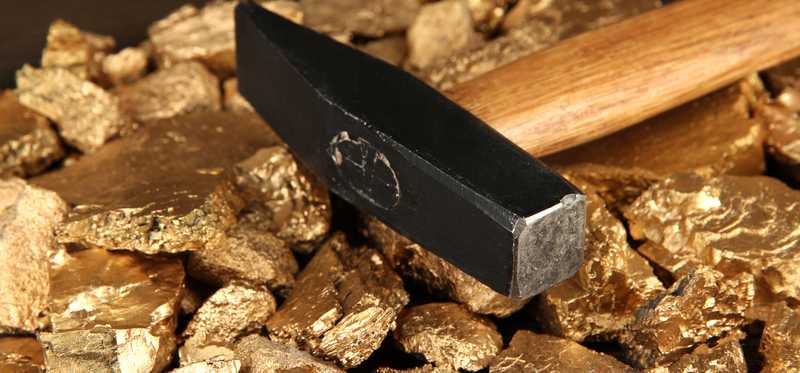
8. Royal Gold
The next three options are all very similar, as each uses the streaming and royalty model. This is where a company like Royal Gold (Nasdaq: RGLD) provides a miner with cash up front in exchange for the right to buy gold and other precious metals at reduced rates in the future. It's a good deal for miners, since other forms of financing may be prohibitively expensive, and for streamers, which contractually lock in low prices. That typically leads to strong operating margins in both good gold markets and bad. Streamers are an excellent way for just about any type of investor to add gold exposure to a portfolio.
Royal Gold gets nearly 90% of its revenue from precious metals, with gold accounting for roughly 70% of sales and silver 20%. Other metals, mostly copper, fill out the rest of the top line. It has more gold exposure than its closest peers, so it's a good choice for investors that want to hone in on gold. It also has a fairly diversified portfolio, with 191 mine investments. Of that total, 41 are producing mines with the rest in some form of development. All in, Royal Gold has a material flow of gold to buy and the opportunity to benefit from production growth as new developments come on. However, the big thing to remember is that the company's "development" costs are limited to the payment it made to buy the stream. That reduces downside risk should a mine not work out as planned. And with so many mine projects in the works, it is inherently diversified. Royal Gold is a good way for investors to add gold exposure to their portfolios.
Previous
Next

9. Franco-Nevada
Before you jump on Royal Gold, however, you should also consider competitor Franco-Nevada (NYSE: FNV). It, too, is a streaming company, but there's a twist here that's worth understanding. First, Franco-Nevada gets roughly 85% of its revenue from precious metals. Gold is the largest share at 66% of sales, with silver and platinum group metals filling out the rest. It also has some exposure to copper, further increasing the diversification within the portfolio. However, the big difference here is that Franco-Nevada gets nearly 15% of its revenue from oil and natural gas properties.
This is clearly not a pure play on gold or precious metals. That said, it does provide notable exposure to the yellow metal and, at the same time, some diversification beyond the space. That actually proved quite beneficial in 2018, as some of the company's investments were struggling with production issues and gold prices were weak. For investors looking to add some gold to their portfolio, but that still want to hedge their bets just a little, Franco-Nevada could be a good option. Note, too, that it is by far the most diversified of its peers, with 51 producing mines, around 240 in some stage of development, 55 producing energy investments, and 25 energy investments in development.
Previous
Next

10. Wheaton Precious Metals
The last name on this list is Wheaton Precious Metals (NYSE: WPM), which, like Royal Gold and Franco-Nevada, is a streaming company. However, it provides the least exposure to the yellow metal. Although 100% of its revenue is derived from precious metals, roughly 50% is gold and 50% is silver. In fact, the company's history is on the silver side, which once basically made up 100% of its top line. Management has consciously worked to diversify into gold. If you are looking for precious metals diversification, Wheaton is a good option.
That said, the company has taken a very different approach with its mine diversification. It specifically makes larger investments in a smaller number of big mines. It has streaming deals attached to 19 operating mines and nine development projects. This increases the risk that problems at any one mine will impact its financial results, but tends to lead to more secure outcomes since it is working with some of the industry's largest names and it has streams attached to highly prominent mines. In some ways Wheaton is like dealing with a gold major, while peers Franco-Nevada and Royal Gold have both taken on the risk of investing in mines that have notably less certain outcomes. For some investors, Wheaton's go big or go home approach might be the more comfortable option.
Reuben Gregg Brewer owns shares of Franco-Nevada. The Motley Fool has no position in any of the stocks mentioned. The Motley Fool has a disclosure policy.
Previous
Next
Invest Smarter with The Motley Fool
Join Over Half a Million Premium Members Receiving…
- New Stock Picks Each Month
- Detailed Analysis of Companies
- Model Portfolios
- Live Streaming During Market Hours
- And Much More
READ MORE
HOW THE MOTLEY FOOL CAN HELP YOU
-
Premium Investing Guidance
Market beating stocks from our award-winning service
-
The Daily Upside Newsletter
Investment news and high-quality insights delivered straight to your inbox
-
Get Started Investing
You can do it. Successful investing in just a few steps
-
Win at Retirement
Secrets and strategies for the post-work life you want.
-
Find a Broker
Find the right brokerage account for you.
-
Listen to our Podcasts
Hear our experts take on stocks, the market, and how to invest.
Premium Investing Services
Invest better with The Motley Fool. Get stock recommendations, portfolio guidance, and more from The Motley Fool's premium services.